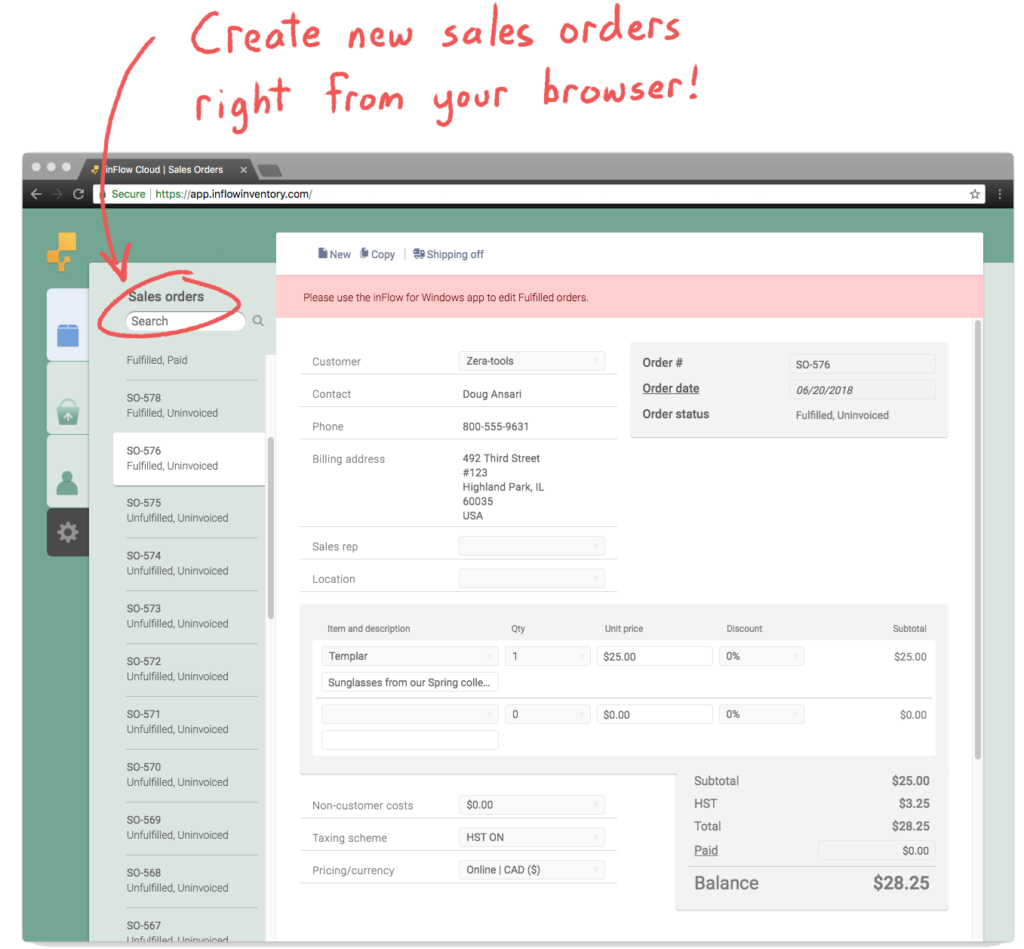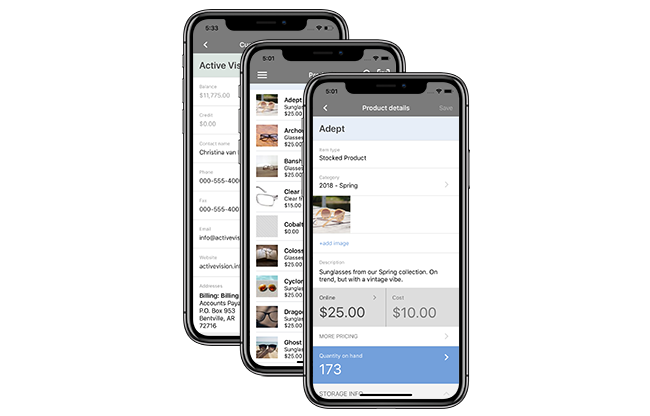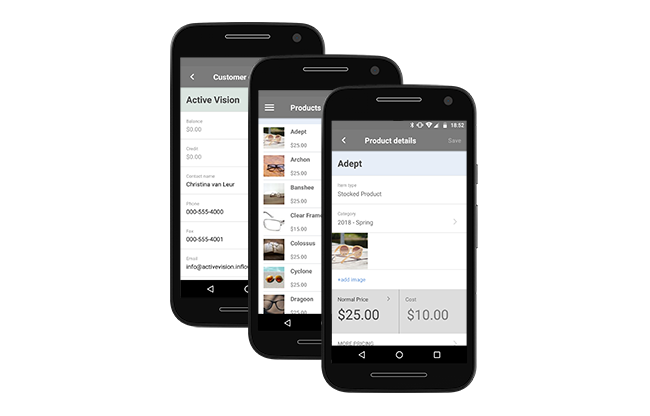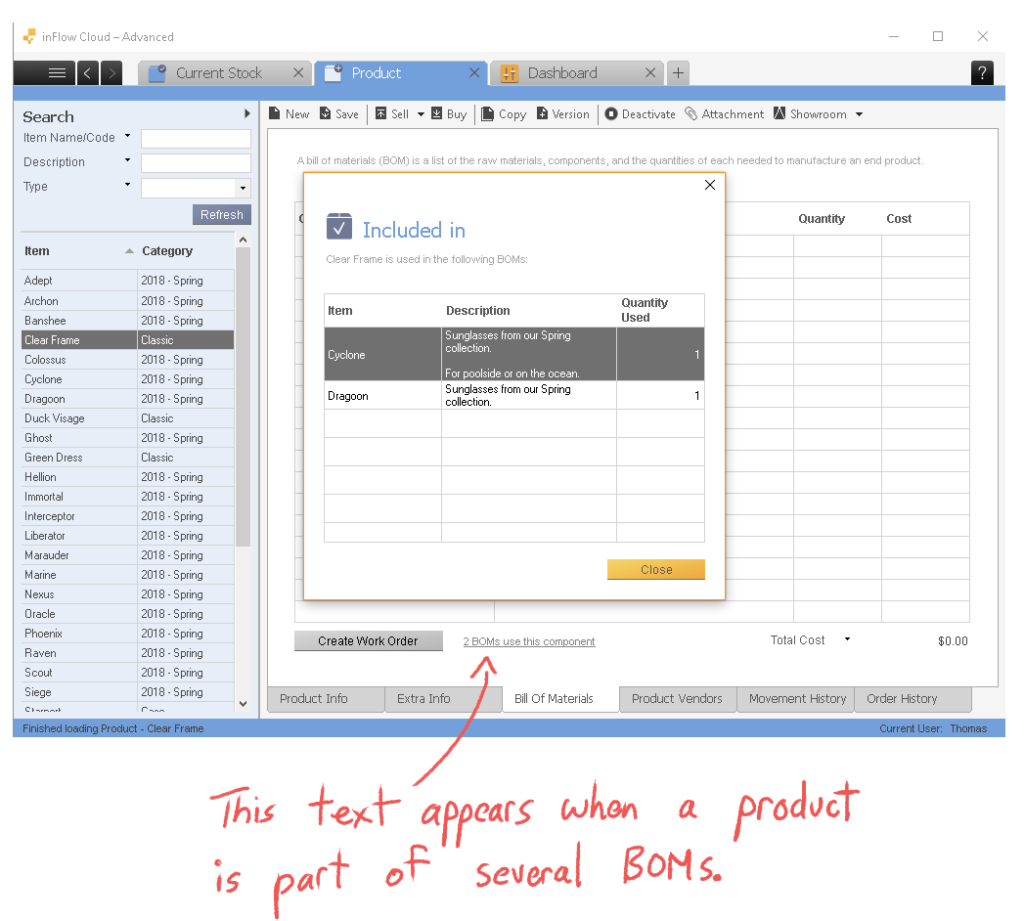Updates to inFlow Inventory apps | Page 20
August 1, 2018
Import sales quotes
As of today’s update, you can now import sales quotes right into inFlow Inventory. So if you make quotes using another system, or if you receive them in batches, then this week’s update should help to speed up your workflow!
General improvements:
- The new sales order custom fields (added in our July 24 update) can now be included in reports.
- We’ve reduced the amount of time it takes for you to recalculate your database (relevant when switching currencies or costing methods).
- inFlow Inventory for Windows now requires Microsoft .NET 4.61 or newer (for .NET upgrade details, see this email).
Stuff we’ve fixed:
- inFlow could previously show misleading subtotals on orders where a unit price had over five decimal places.
- Web sales orders were showing a squished product picker if you didn’t select a customer first.
- The extra custom fields for sales orders were not showing up in the web app.
July 24, 2018
Sales orders in your browser

Want to start a new sales order, but don’t have inFlow Inventory installed on that computer?
No problem, just start one from a web browser — yes, even the one on your Mac. ?
As of today, our web app can create sales order and specify the customer, billing/shipping address, and the items and prices. To try it out, just log in to https://app.inflowinventory.com and select the green bag icon along the left side.
General improvements:
- Sales orders can now have up to ten custom fields (up from three).
Issues we’ve fixed:
- You should no longer have difficulty saving data while running a large import.
- You can now log out of the app even if your trial has expired.
July 10, 2018
General improvements:
- We’ve added a link to Cloud Updates (that’s the page you’re reading right now) so that it’s easier to find out what we’ve improved after you update inFlow.
- We’ve added a link to sign up for our free webinars, right inside the app.
Stuff we’ve fixed:
- We’ve added more specific error messages if you need to reauthorize QuickBooks Online with inFlow Inventory.
- You can once again disconnect the integration with QuickBooks Online.
June 28, 2018
inFlow Inventory for iPhone

Hi iOS users! Our inFlow Inventory companion app is now available for iPhone, starting today.
It’s great for viewing and editing product details, managing your customer list, and doing quick stock adjustments (including scanning barcodes!).
We’ve designed it with a gorgeous new interface that matches our web app, while still feeling right at home on differently-sized iPhone screens.
If you’d like to try it out, make sure you have an active inFlow Inventory trial or subscription, then head to the App Store to download it.
inFlow Inventory for Android, reborn!

Today we’re re-releasing our inFlow Inventory companion app for Android. It has the same feature set as our previous app — product and customer editing, stock adjustments — but this version should feel a good deal faster.
You can try out the open beta on the Play Store today.
General improvements:
- We’ve added invoice date as a search filter and a column in sales order search list.
Stuff we’ve fixed:
- Alphabetical sorting in lists will no longer prioritize capital letters over lowercase letters.
- Some customers had trouble syncing with Shopify last week; but please get in touch with us.(support@inflowinventory.com) if there are any more issues
- We’ve fixed a problem inviting team members to an account when the email was already used for an Online Showroom invitation.
- Some migrations from inFlow On-Premise to Cloud were timing out due to attachments.
June 19, 2018
General improvements:
- We’ve sped up the process for recalculating costs in a Cloud database
Bug fixes:
- Database files from inFlow On-Premise v3.6 can now be migrated to inFlow Inventory without issue
June 12, 2018
Stuff we’ve fixed:
- We’ve fixed an issue where Billing Address was not being saved properly if it was the first address for a customer
- The reset password page should now work properly when accessed on mobile
- We’ve fixed an issue where invoices could be duplicated in QuickBooks Online if they were saved too quickly
- Online Showroom will no longer display a currency symbol if you have selected “No currency symbol” in the settings
- Deactivated pricing schemes will now be properly hidden on all pages
- Fixed an issue that inadvertently limited the number of users who could use eCommerce integrations at the same time
June 5, 2018
General improvements:
- We’ve significantly improved performance for reports where hundreds or thousands of products are selected
Stuff we’ve fixed:
- The Ship tab now properly disappears when a sales order has no shipping on it
- We’ve updated our DYMO integration to make sure it works with the latest DYMO software
May 29, 2018
Stuff we’ve fixed:
- You should now be able to press the tab key to move through Locations and Pricing Schemes
May 23, 2018
Stuff we’ve fixed:
Oops! Yesterday’s release had a problem where your search terms in the order list would be cleared when you switched or copied an order. This meant opening an order would reset the list and any filters you had set. This was an unintentional side effect of yesterday’s change to improve speed by not loading all of your old orders. We’ve corrected this and your filters should stay in place as long as that tab is open.
We’ve also included a small fix for a display issue with the new Where Used feature for Bill of Materials components when inFlow was being used fullscreen.
May 22, 2018
Bill of Materials improvements:

If you’ve found it difficult to find out whether a product was listed as part of a bill of materials, this update is for you. The Bill of Materials tab now shows if a product belongs to other builds, and we’ve a new window called Included in that displays exactly which builds those are.
General improvements:
- Opening a new Purchase Order or Sales Order feels faster because inFlow now loads the past 90 days worth of orders (instead of all previous orders)
Stuff we’ve fixed:
- inFlow now shows an error if you try to print an empty pick list
- Sales orders containing Serialized Products can no longer be imported as fulfilled if the correct serials are not in stock
